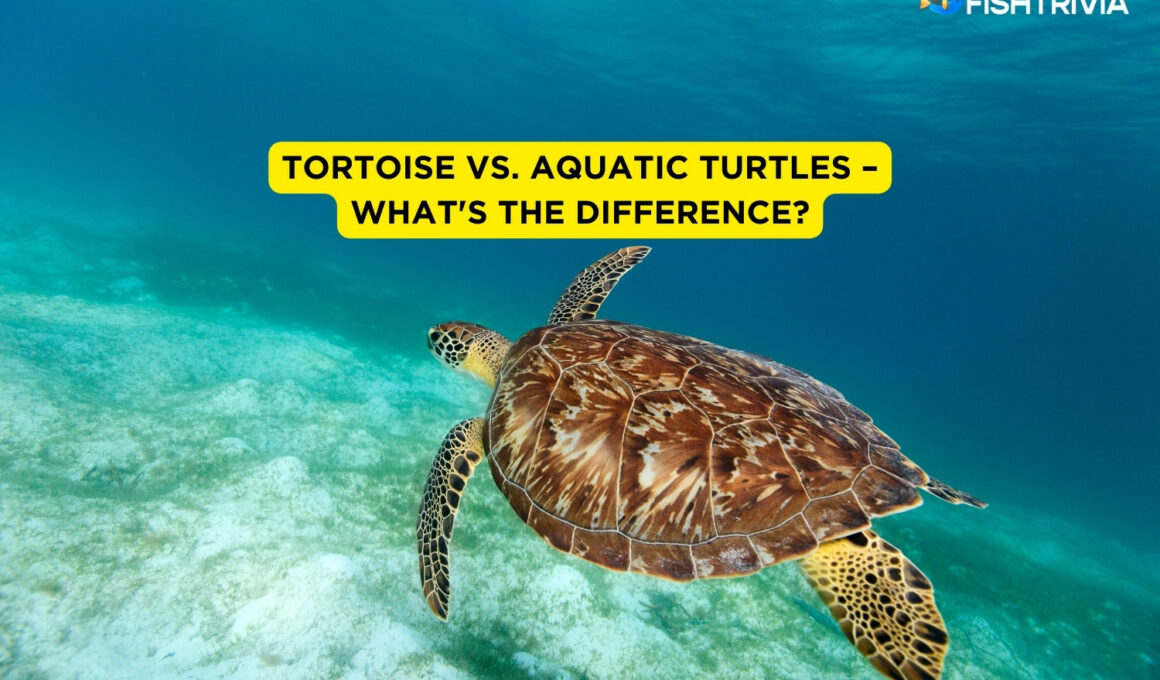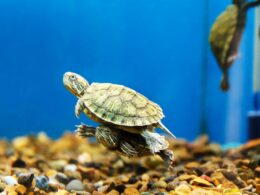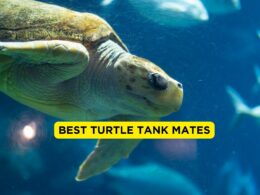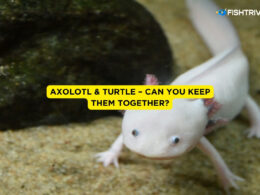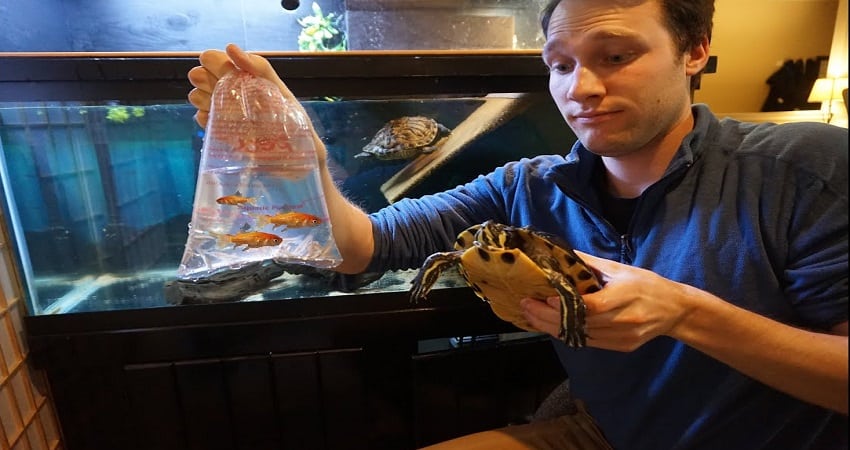In this article Show
Most people confuse the difference between turtles and tortoises since they have some standard features. For instance, both reptiles and the shells on their backs through the shells differ from one to another.
Though both have standard features, each has unique features. For instance, tortoises have a round shell with a dome shape, while turtles have streamlined bodies that enable them to swim in the water, unlike tortoises.
Luckily, the article below describes the common differences between the tortoise and the turtles. For example, the article shows how both species eat, their physical appearance, shells, and weight, among others.
Therefore, the information below makes it easy to distinguish between a tortoise and a turtle.
Also worth reading;
- Axolotl & Turtle – Can You Keep Them Together?
- African Butterfly Fish Care: Tank Mates, Feeding, Breeding & More
- Can Turtles Live With Fish & What Fish Can They Live With?
Quick Comparison Table Between Tortoise And Turtle
| Comparison | Tortoise | Turtle |
| Diet | Majority are herbivores | They feed on both meat and vegetables |
| Weight | Their shell makes them heavier | Their shell make them lighter |
| Limbs appearance | Their legs are not straight and are short. | Have long claws that are webbed. |
| Shape appearance | Their shells are dome-shaped. | Their shells are flat and are streamline. |
| Lifespan | Longer lifespan, around 82 to 155, they stay up to 326 years. | Short lifespan than a tortoise, around 20 to 40 years. The maximum age they live is 86 years. |
| Birth | After birth, the tortoise changes its position from their nests to the mother burrows. | Turtles hatch on their own for 91 to 120 days. |
| Swimming | Have the inability to swim due to their heavyweight | Their weight supports swimming. Also, the streamlined body enables them to swim effectively. |
| shedding | It does not shed scutes | Sheds scutes |
Differences Between Tortoise And Turtle
There are some differences between the two species, and they include;
1. Diet And Feeding
Tortoises need a lot of calcium to maintain their huge, heavy shell. Turtles, like humans, need vitamin D3 to build strong bones and phosphorus to regulate chemical reactions. They both require specific vitamins and minerals but in various ways.
At its core, your tortoise is an herbivore. Even though their meals vary based on type, how old, and natural surroundings, they prefer green vegetation.
The food of a tortoise is mainly composed of grasses, branches with leaves, and unwanted plants, especially weeds, flowers, and grasses, with seasonal fruit or vegetable tossed in for good measure. The organisms are plant browsers; hence they don’t have a favorite plant.
2. Weight
The weight of both species tends to differ due to their appearance. For example, the tortoise has shells that are dome-shaped and heavy, thus increasing its weight. Their weight ranges up to 90 pounds. In contrast, the turtles are light due to their streamlined body.
3. Limbs Appearance
A tortoise’s shell is dome-shaped, and its feet are short and robust. Also, the tortoise has legs that are bent and not straight.
A turtle’s shell is flat and sleek, and its limbs are similar to those of a tortoise, but the turtle’s feet have claws that are sharp and webbed and enable it to hold floating logs and climb up riverbanks. Some turtles, such as the pig-nosed turtle, might even have flippers.
4. Lifespan Differences
Tortoises can live for 60-80 years, similar to humans, but others stay longer up to around 150 years before dying. The highest recorded lifespan of a tortoise is about 189 years. A turtle’s typical lifespan ranges from 19-42 years.
In contrast, an aquatic turtle’s average lifespan is 62 to 75 years, with roughly 42 to 52 years needed for the turtles to mature fully.
Some people oppose the idea that tortoises can survive in captivity for over 205 years; verifying these claims has proven challenging. Most tortoises survive for 100 years and above in captivity as long as you manage the species carefully.
5. Habitat Differences
Tortoises live on land, while turtles live in the water and sometimes on land. Tortoises and turtles have the ability to lay on the surface. The tortoise or the turtle mother will make a special place to lay eggs ranging from two to fifteen eggs.
The hatching process will incubate on its own for 90 to 120 days inside the egg. They emerge from the incubation period after making their way from the burrow to the ground.
Also, tortoise moms safeguard their hatchlings for roughly 80 days, after which they must fend for themselves, whereas turtle hatchlings must fend for themselves from the moment they are born.
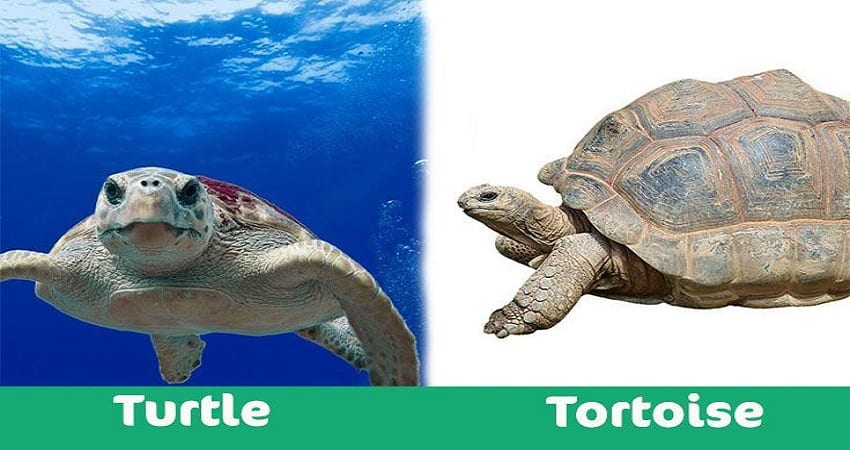
6. Shells
The species have shells covering their bodies, and they are crucial in that they provide researchers with a good understanding of the living conditions, especially when underwater.
Turtles species love staying underwater; hence their shells are streamlined and flat to allow them to swim and dive, but tortoise species prefer staying in cold places such as land.
They have shells that protect them from attackers, and the shells are huge and their shape is dome-shaped. A tortoise’s shell is also relatively heavy, while a turtle’s shell is lightweight to enable them to float freely with high speed.
7. Geographical Dispersal
The species of turtles are usually found in places such as Asia and Africa, while tortoises species are mainly located in areas such as America and Africa.
Turtles like semi-tropical settings and tropical regions are comparable to those most lizards prefer because they require warmer external temperatures to keep their bodies warm.
On the other hand, some turtles are known to hibernate during the winter, mainly along riverbanks.
Because their habitats are almost totally heated, tortoises are not known to hibernate. Some species can drastically reduce their metabolism when they are hungry or thirsty.
8. Reproduction
Turtle eggs are comparable to other species’ eggs. The species produce eggs that are thickened and soft. The hatching process of the turtle is done in its nest for around 98-125 days on its own.
Tortoises, the female species, create tunnels suitable for them to lay eggs, about 2 to 14. Within the ping-pong-ball-sized eggs, hatchlings take 90-120 days to incubate.
9. Shedding
Turtles’ scutes are shed. They bask for various reasons, one of which is to completely get rid of the wetness in their structures, leaving the species more susceptible to pieces.
If dissipation isn’t enough, the turtles have been observed scraping their shells against a hard surface to remove the tissue, which not only removes the old but also provides room for the new.
A turtle will shed abnormally if it cannot lose its scutes (a condition called dysecdysis). In other reptiles, such as the bearded dragon, irregular shedding can cause health problems, including infection, but tortoises do not shed.
Once the keratin is continually coming in, and the aged layers are pushed upwards from beneath, tortoises have hills and ridges on their surface. Jaws also don’t match well around the curved shape, making it hard for the species to take a bite.
10. Swimming
Tortoise is just not made for swimming. That’s partly due to their shells, which are ungainly, bulky dome-shaped objects weighing ranging from 19 to 910 pounds.
Some sea species like the Red-Eared Slider are better swimmers since they weigh light and their body is streamlined to increase their swimming speed. These creatures’ main form of protection is the bone plate attached to their ribs and spines.
Similarities Between Tortoise And Turtle
Despite the tortoise and turtle having different features, there are specific features that they share. The features include;
1. Shells
Both species have shells all over their body, especially both the lower and the upper body.
The upper body, carapace, and the lower body, plastron are connected by a body part known as a bridge, indicating that the whole body remains intact even when the limbs and the head are separated from the shells. In general, these reptiles are shy and secretive.
2. Reptiles
Tortoises and turtles belong to the same order, the Testudines; however, they belong to separate categorizations.
3. Eggs And Ectothermic
Both tortoises and turtles deposit eggs in the earth, sand, or vegetation. They, like other reptiles, are ectothermic, meaning they regulate their body temperature through external means such as sunbathing.
4. Teeth
Turtles and tortoises don’t have teeth; instead, they bite with the hard edges of their mouths.
You might be interested to know about: Axolotl and Turtle – Can You Keep Them Together?
Conclusion
Despite the species having standard features, they have some different features. For instance, their color, size, weight, shells, shedding, and swimming differ from one species to another. Therefore, it is essential to understand the differences, especially if you wish to keep one species.
In conclusion, it is advisable to take some precautions when handling both species. The precautions include; don’t touch your face after touching them, avoiding touching the species on the head or legs, and finally, washing your hands using recommended detergent immediately after touching the species.






